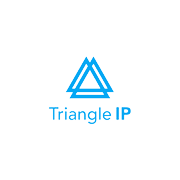Cornell University Patent Portfolio Statistics
Profile Summary
This article summarizes the perfomance of the assignee in the recent years. The overall statistics for this portfolio help to analyze the areas where the assignee is performing well. The filing trend, perfomance across the tech centers and the perfomance of the recent applications has been mentioned below. All the stats are calculated based on the perfomance in USPTO.
How does the overall patent portfolio of Cornell University look like?
| Assignee | Art Units | |
| Total Applications: | 1,964 | 2,061,582 |
| Granted Patents: | 1,248 | 1,160,152 |
| Grant Index | 74.91% ↑ | 69.94% |
| Abandoned/Rejected Applications: | 418 (25.09%) | 498,618 (30.06%) |
| In-Process Applications: | 296 | 402,812 |
| Average Grant Time: | 3.2 Years ↑ | 2.76 Years |
| Average Office Actions: | 2.04 ↑ | 1.62 |
Which Technology Area Cornell University is filing most patents in? (Last 10 years)
| Art Unit | Definition | Total Applications |
| 1634 | Molecular Biology, Bioinformatics, Nucleic Acids, Recombinant DNA and RNA, Gene Regulation, Nucleic Acid Amplification, Animals and Plants, Combinatorial/ Computational Chemistry | 93 |
| Opap | Parked GAU | 81 |
| 1633 | Molecular Biology, Bioinformatics, Nucleic Acids, Recombinant DNA and RNA, Gene Regulation, Nucleic Acid Amplification, Animals and Plants, Combinatorial/ Computational Chemistry | 46 |
| 1661 | Plants | 45 |
| 1645 | Immunology, Receptor/Ligands, Cytokines Recombinant Hormones, and Molecular Biology | 43 |
How many patents are Cornell University filing every year?
| Year | Total Applications | Predicted |
| 2022 | 0* | 774 |
| 2021 | 61* | 726 |
| 2020 | 119 | 612 |
| 2019 | 142 | 142 |
| 2018 | 123 | – |
| 2017 | 100 | – |
| 2016 | 129 | – |
| 2015 | 134 | – |
| 2014 | 158 | – |
| 2013 | 114 | – |
*The drop in the number of applications filed in last two years compared to previous years is because applications can take up to 18 months to get published
Recently filed patent applications of Cornell University in USPTO?
Application number: 17/551,994
Abstract:
Publication date: 2022-06-16
Applicant: Cornell University
Inventors: A Adler Daniel
Publication number: US20220088143A1
Application number: 17/546,951
Abstract:
Publication date: 2022-03-24
Applicant: Cornell University
Inventors: Mathison Megumi
Publication number: US20220226502A1
Application number: 17/615,382
Abstract:
Publication date: –
Applicant: Cornell University
Inventors: Kaminsky Stephen
How are Cornell University’s applications performing in USPTO?
| Application Number | Title | Status | Art Unit | Examiner |
| 17/551,994 | System Implementing Encoder-Decoder Neural Network Adapted To Prediction In Behavioral And/Or Physiological Contexts | – | OPAP | Central, Docket |
| 17/546,951 | Angiogenic Conditioning To Enhance Cardiac Cellular Reprogramming Of Fibroblasts Of The Infarcted Myocardium | Docketed New Case – Ready for Examination | OPAP | Central, Docket |
| 17/615,382 | Adeno-Associated Virus Vector Delivery Of Cystathionine Beta-Synthase (Cbs) Enzyme For Treating Cbs Deficiency | Application Undergoing Preexam Processing | 1633 | – |
| 17/614,022 | Devices, Systems, And Methods For Personal Speech Recognition And Replacement | Docketed New Case – Ready for Examination | OPAP | Central, Docket |
| 17/532,285 | Dipeptidomimetics As Inhibitors Of Human Immunoproteasomes | Docketed New Case – Ready for Examination | OPAP | Central, Docket |

